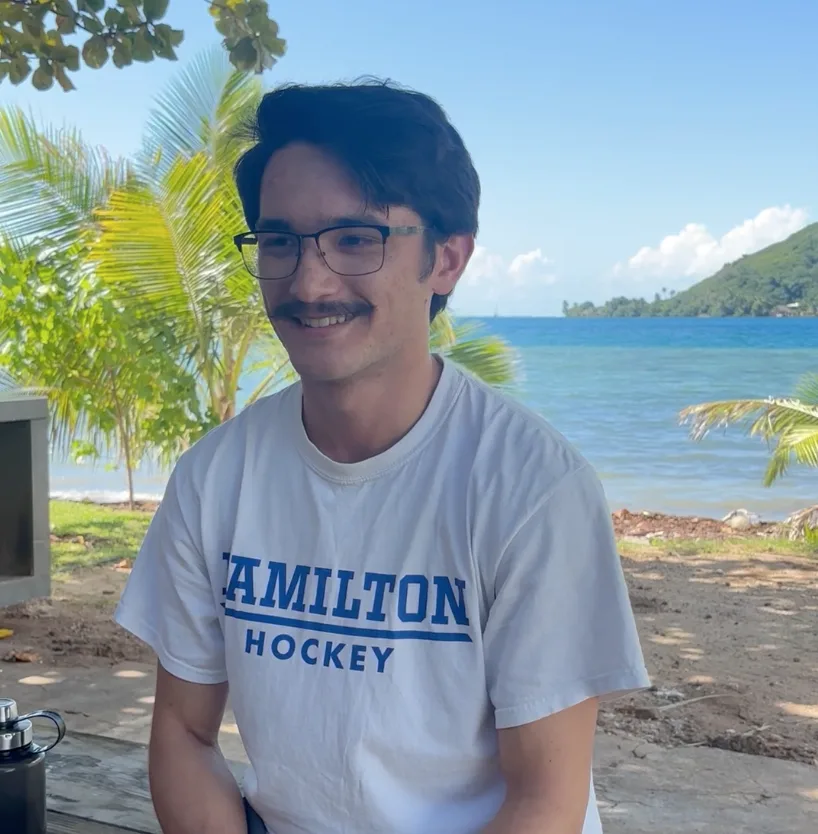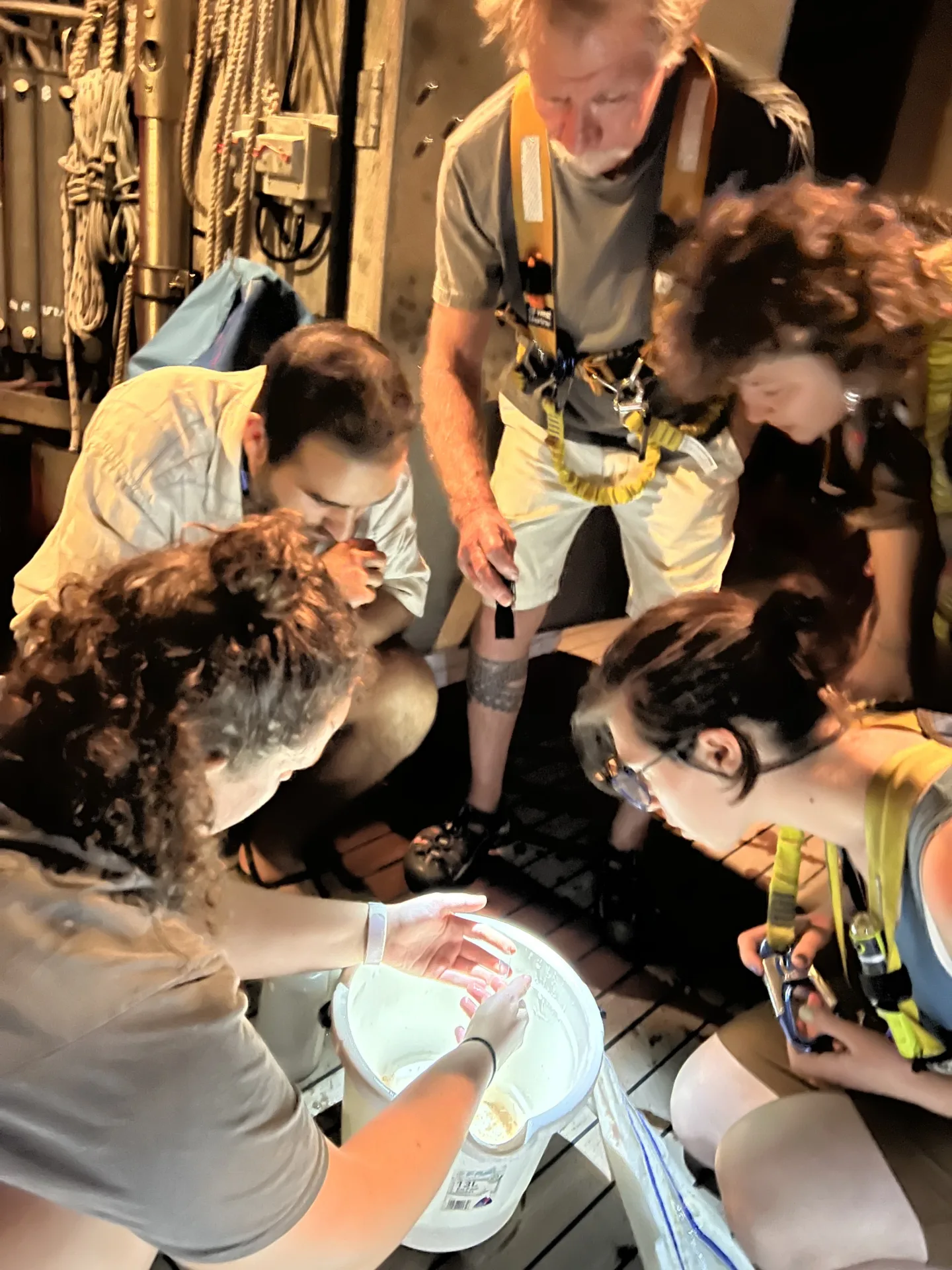Programs Blog
Andrew on Te Fare Natura Museum, Lanternfish

Date: May 21, 2025
Time: 2030
Location: Gump Marine Station, Mo’orea, Mā ‘ohi (Society Islands)
Weather: 77˚ F, 8 kts out of the east
This is an excerpt from an interview with Andrew Patterson, Hamilton College
A couple days ago we visited the Te Fare Natura Museum. What was that like?
This is a museum that showcases biodiversity in Mo‘orea and French Polynesia in general. They have some cool aquaria there, showcase a couple different types of reef around here, and they have exhibits on island formation, how French Polynesia was formed. The museum has some general geographical information and some cultural aspects, too. They have a display of traditional Polynesian musical instruments. We did have an English speaking guide, but there was one display that was unfortunately all in French: we were able to piece together that apparently traditionally there is a third gender in French Polynesia. There was a film on cone snails that was very entertaining. It was very dramatic cinematography of these little inch and a half long snails.
We’re spending a big chunk of our two weeks in Mo‘orea and at the Gump marine station processing and writing up the oceanographic research from the voyage. How is your project going?
My group is working on myctophids, lantern fish. And specifically their biodiversity across our South Pacific cruise track and a little population genomics stuff on ocean diversity and how that is related to dissolved oxygen concentration and oxygen minimum zone, depth. So we collected a bunch of samples out there and we have samples from past cruises. Right now we’re almost done with our data analysis and ready to start writing and figuring out what we actually found. So far we have some pretty clear demarcations of where certain species live. It’ll be interesting to see how this correlates to oxygen concentrations, which really do vary across our cruise track.
Did your thoughts on the ocean change over the course of your voyage?
I grew up in a coastal area, Long Island, NY, so I’m used to being on the water. But it always seemed kind of daunting to get out there. Beyond a few miles. But now I’ve been significantly more than a few miles off the coast. I feel much more at home. I really appreciate the quiet out there and how peaceful it can be: even when you’re in a gale.


Recent Posts from the Ships
- Ocean Classroom 2024-A collaborative high school program with Proctor Academy
- Collaborations and Long-term Commitments: SEA’s Caribbean Reef Program Sets a Course for Coastal Programs that Compliment Shipboard Experiences.
- Sea Education Association students prepare for life underway using state of the art nautical simulation from Wartsila Corporation.
- SEA Writer 2022, Magazines From the Summer SEA Quest Students
- Technology@SEA: Upgrades Allow Insight into Ocean Depths
Programs
- Gap Year
- Ocean Exploration
- High School
- Science at SEA
- SEA Expedition
- SEAScape
- Pre-College
- Proctor Ocean Classroom
- Protecting the Phoenix Islands
- SPICE
- Stanford@SEA
- Undergraduate
- Climate and Society
- Climate Change and Coastal Resilience
- Coral Reef Conservation
- Marine Biodiversity and Conservation
- MBL
- Ocean Exploration: Plastics
- Ocean Policy: Marine Protected Areas
- Oceans and Climate
- Pacific Reef Expedition
- The Global Ocean: Hawai'i
- The Global Ocean: New Zealand